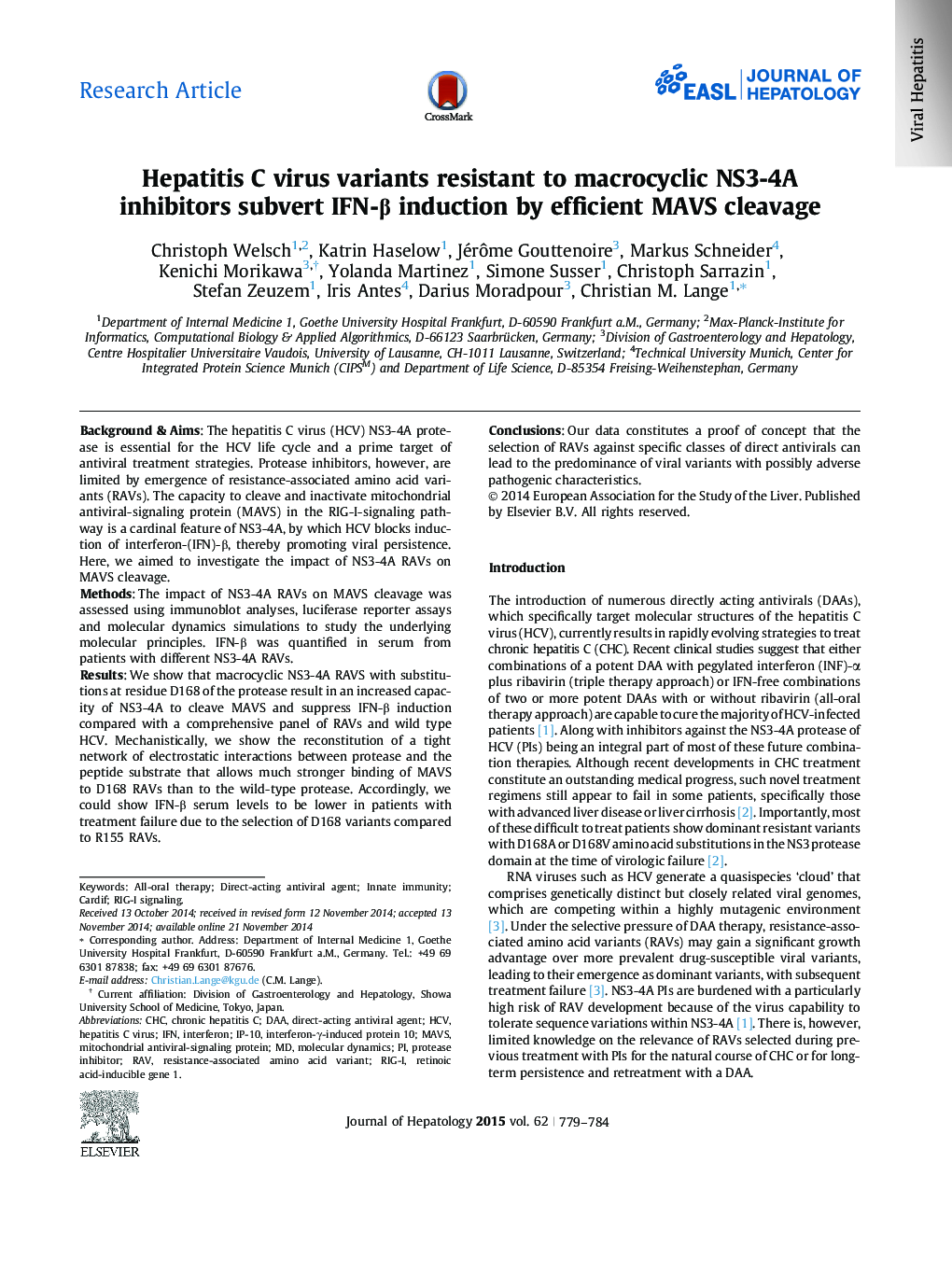| Article ID | Journal | Published Year | Pages | File Type |
|---|---|---|---|---|
| 6101614 | Journal of Hepatology | 2015 | 6 Pages |
Background & AimsThe hepatitis C virus (HCV) NS3-4A protease is essential for the HCV life cycle and a prime target of antiviral treatment strategies. Protease inhibitors, however, are limited by emergence of resistance-associated amino acid variants (RAVs). The capacity to cleave and inactivate mitochondrial antiviral-signaling protein (MAVS) in the RIG-I-signaling pathway is a cardinal feature of NS3-4A, by which HCV blocks induction of interferon-(IFN)-β, thereby promoting viral persistence. Here, we aimed to investigate the impact of NS3-4A RAVs on MAVS cleavage.MethodsThe impact of NS3-4A RAVs on MAVS cleavage was assessed using immunoblot analyses, luciferase reporter assays and molecular dynamics simulations to study the underlying molecular principles. IFN-β was quantified in serum from patients with different NS3-4A RAVs.ResultsWe show that macrocyclic NS3-4A RAVS with substitutions at residue D168 of the protease result in an increased capacity of NS3-4A to cleave MAVS and suppress IFN-β induction compared with a comprehensive panel of RAVs and wild type HCV. Mechanistically, we show the reconstitution of a tight network of electrostatic interactions between protease and the peptide substrate that allows much stronger binding of MAVS to D168 RAVs than to the wild-type protease. Accordingly, we could show IFN-β serum levels to be lower in patients with treatment failure due to the selection of D168 variants compared to R155 RAVs.ConclusionsOur data constitutes a proof of concept that the selection of RAVs against specific classes of direct antivirals can lead to the predominance of viral variants with possibly adverse pathogenic characteristics.
Graphical abstractDownload high-res image (166KB)Download full-size image
